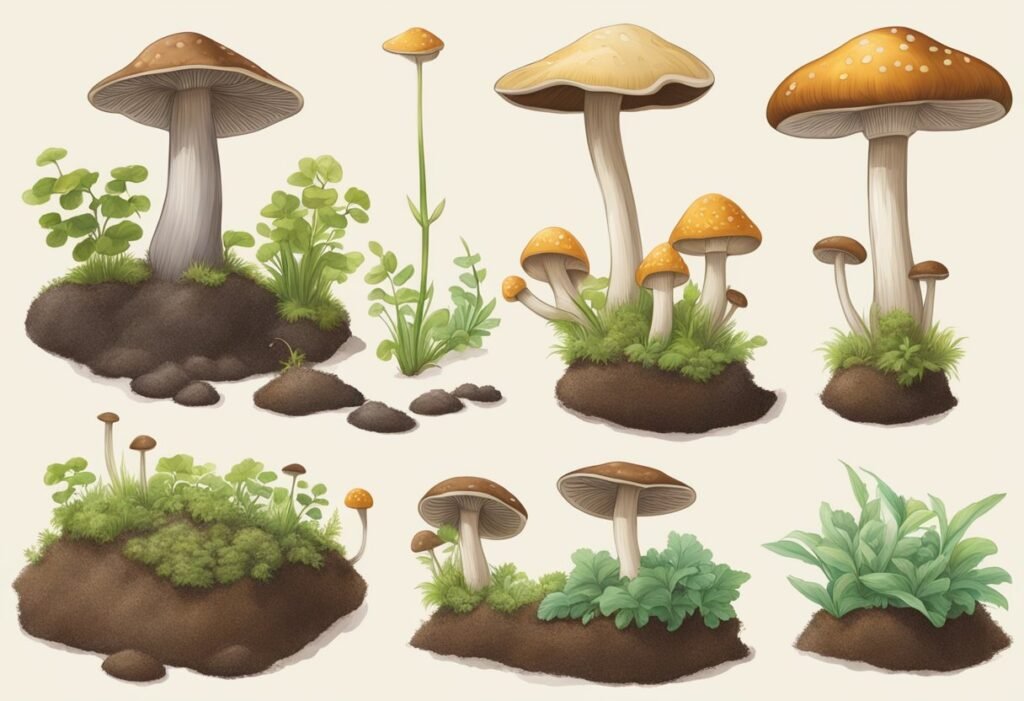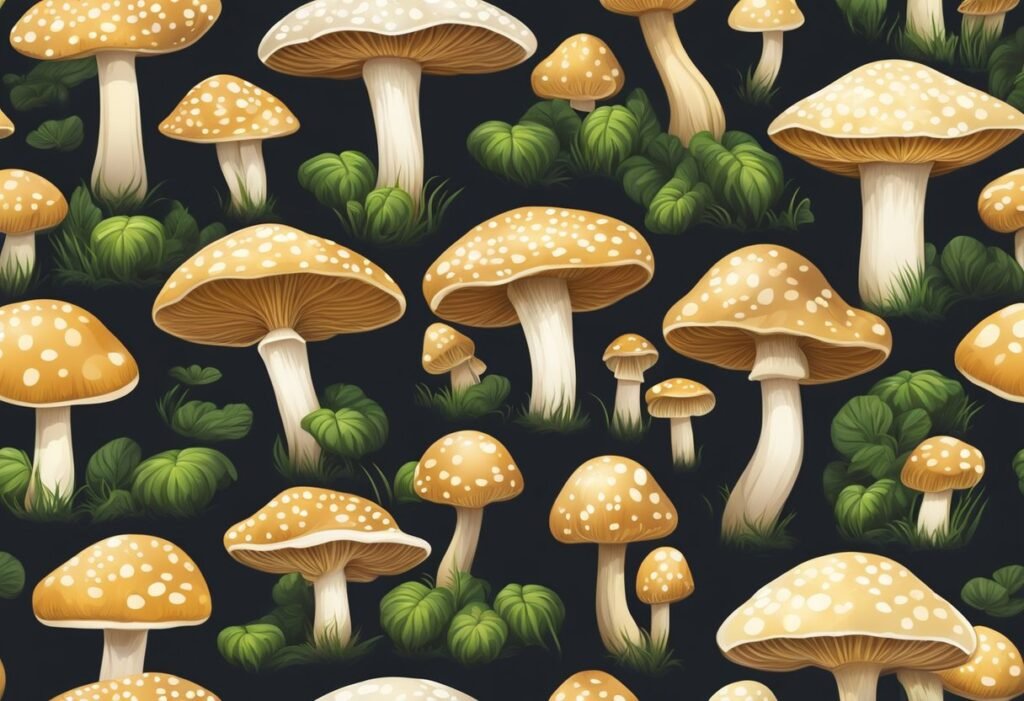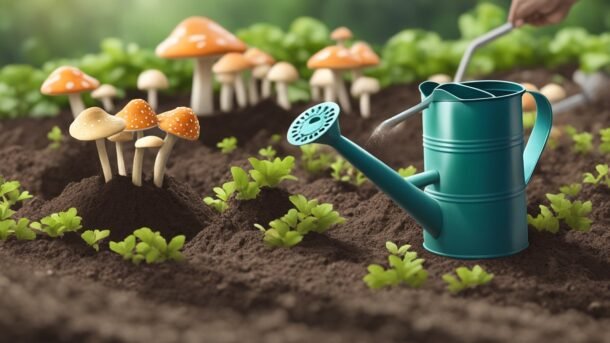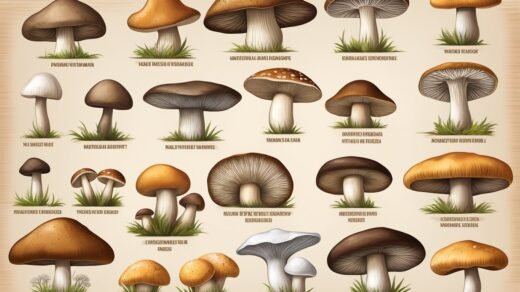Growing Ape mushrooms can be a fun and rewarding experience for those interested in cultivating their own psychedelic fungi. Ape mushrooms, short for Albino Penis Envy mushrooms, are a potent strain of Psilocybe cubensis that are known for their unique appearance and strong effects.
To grow Ape mushrooms, one must first obtain the necessary materials. This includes a substrate, such as sawdust or straw, as well as spores or a liquid culture syringe. It is important to keep the growing area at a consistent temperature of around 75-80°F and in a humid environment with plenty of fresh air.
Once the materials are gathered and the growing area is set up, the process of cultivating Ape mushrooms can begin. While they may be slow growers and yielders, the potency of Ape mushrooms make them a popular choice for those looking for a more intense psychedelic experience. With patience and attention to detail, growing Ape mushrooms can be a successful and enjoyable endeavor.
Understanding Ape Mushrooms

Species Overview
The Albino Penis Envy (APE) mushroom is a unique and highly sought-after strain of the Psilocybe Cubensis species. It is known for its distinctive appearance, with a bulbous cap and a thick, white stem. The APE mushroom is a potent strain that is prized for its strong psychedelic effects and high levels of psilocybin.
Ideal Growing Conditions
To successfully cultivate APE mushrooms, it is important to create the ideal growing conditions. These mushrooms thrive in a humid environment with plenty of fresh air. The substrate used for growing APE mushrooms can be sawdust or straw, and the growing area should be kept at a consistent temperature of around 75-80°F.
It is important to note that APE mushrooms are known to be slow-growing, and may take longer to colonize and fruit than other strains of Psilocybe Cubensis. However, with patience and attention to detail, growers can achieve a successful harvest of these prized mushrooms.
In addition to the ideal growing conditions, it is crucial to use high-quality spores or a spore syringe from a reputable vendor to start the cultivation process. By following these guidelines, growers can successfully cultivate the highly sought-after APE mushroom strain.
Preparation for Cultivation

Selecting Spores
The first step in growing Ape mushrooms is to select the right spores. It is important to choose a reputable vendor to ensure the quality and viability of the spores. Ape mushrooms are known for their potency and unique appearance, so it is worth taking the time to find a good source.
Once you have obtained the spores, it is important to store them properly. Spores can be stored in a cool, dry place for several months. It is also possible to store them in a refrigerator or freezer for longer periods of time.
Creating a Sterile Environment
Creating a sterile environment is crucial for successful Ape mushroom cultivation. Any contamination can ruin the entire batch, so it is important to take the necessary precautions.
Before starting, it is important to clean and disinfect all surfaces and equipment that will come into contact with the spores and substrate. This can be done using a bleach solution or other disinfectant.
It is also important to work in a clean, well-ventilated area. Gloves and a face mask can help prevent contamination from the grower.
Once the environment is sterile, the spores can be inoculated into a substrate. This can be done using a variety of methods, including spore syringes, spore prints, or liquid cultures.
Overall, careful preparation and attention to detail are key to successful Ape mushroom cultivation. By selecting high-quality spores and creating a sterile environment, growers can maximize their chances of a successful harvest.
Inoculation Process
Inoculation is a crucial step in growing Ape mushrooms. It involves introducing spores or a living mushroom sample into a sterilized substrate. The spores or sample will then grow and colonize the substrate, eventually producing fruiting bodies.
Substrate Preparation
Before inoculation, it is essential to prepare the substrate. Ape mushrooms grow well in a variety of substrates, including grain, sawdust, and straw. The substrate should be sterilized to prevent contamination by other microorganisms that can compete with the Ape mushrooms.
One way to sterilize the substrate is by using a pressure cooker. The substrate is placed in jars or bags and sterilized at a high temperature and pressure for a specific duration. Another way is by using an autoclave, which is a machine that sterilizes the substrate using steam.
Spore Syringe Inoculation
Spore syringe inoculation is one of the most common methods of inoculation. It involves injecting spores into the sterilized substrate using a syringe. The spores will then germinate and grow, colonizing the substrate.
To prepare the spore syringe, the spores are first collected from a mature Ape mushroom. The spores are then mixed with sterile water or another liquid to create a spore solution. The spore solution is then drawn into a syringe.
During inoculation, the needle of the syringe is inserted into the substrate, and the spore solution is injected. The needle is then removed, and the inoculation hole is sealed with tape or another sterile material.
In conclusion, inoculation is a crucial step in growing Ape mushrooms. Substrate preparation and spore syringe inoculation are two common methods used to inoculate the substrate. By following the proper inoculation procedures, growers can increase their chances of producing healthy and abundant Ape mushrooms.
Growth and Maintenance
Growing APE mushrooms requires careful monitoring of temperature, humidity, ventilation, and light. Here are some important factors to consider when growing and maintaining APE mushrooms.
Monitoring Temperature and Humidity
APE mushrooms require a warm and humid environment to grow properly. The ideal temperature range for APE mushrooms is between 75°F and 80°F. Anything above or below this range could negatively affect the growth of the mushrooms.
In addition to temperature, humidity is another crucial factor to consider when growing APE mushrooms. The humidity level should be kept between 80% and 90% throughout the growth cycle. This can be achieved through the use of a humidifier or by misting the growing area regularly.
Adequate Ventilation and Light
Adequate ventilation is essential for the growth of APE mushrooms. This helps to prevent the buildup of carbon dioxide, which can be harmful to the mushrooms. It also helps to maintain the proper humidity level.
Light is also an important factor to consider when growing APE mushrooms. The mushrooms require indirect light to grow properly. Direct sunlight can be harmful and should be avoided.
To maintain the proper humidity and temperature levels, it is recommended to use a hygrometer and thermometer. These tools can help you monitor the environment and make necessary adjustments to ensure optimal growth.
Overall, growing APE mushrooms requires careful attention to detail and proper maintenance of the growing environment. By following these guidelines, you can ensure a successful and bountiful harvest of APE mushrooms.
Harvesting and Storage
Determining Harvest Time
Harvesting Ape mushrooms at the right time is crucial to ensure the best yield and potency. The ideal time to harvest Ape mushrooms is when the veil under the cap breaks, and the gills are fully exposed. At this stage, the mushroom is at its peak potency and flavor. If the mushroom is left to grow beyond this stage, the cap may flatten out, and the gills will start to darken, indicating that the spores are maturing.
Proper Harvesting Technique
When harvesting Ape mushrooms, it is essential to use a clean and sharp pair of scissors or a sharp knife. Cut the stem as close to the substrate as possible without damaging the mycelium. It is also important to avoid touching the mushrooms with bare hands as this may transfer bacteria and other contaminants onto the mushroom.
Storage Methods
Once harvested, Ape mushrooms should be stored properly to maintain their flavor and potency. The best way to store Ape mushrooms is to keep them in a paper bag or wrapped in a paper towel in the refrigerator. Avoid storing them in plastic bags as this can cause the mushrooms to sweat, leading to spoilage.
If you want to store Ape mushrooms for an extended period, you can dry them. Drying Ape mushrooms is a simple process that involves spreading them out on a clean surface and allowing them to air dry. Alternatively, you can use a dehydrator to speed up the process. Once dried, store the mushrooms in an airtight container in a cool, dry place.
In conclusion, harvesting and storing Ape mushrooms properly is crucial to ensure the best yield and potency. By following the tips outlined above, you can enjoy the full benefits of your Ape mushroom harvest.




